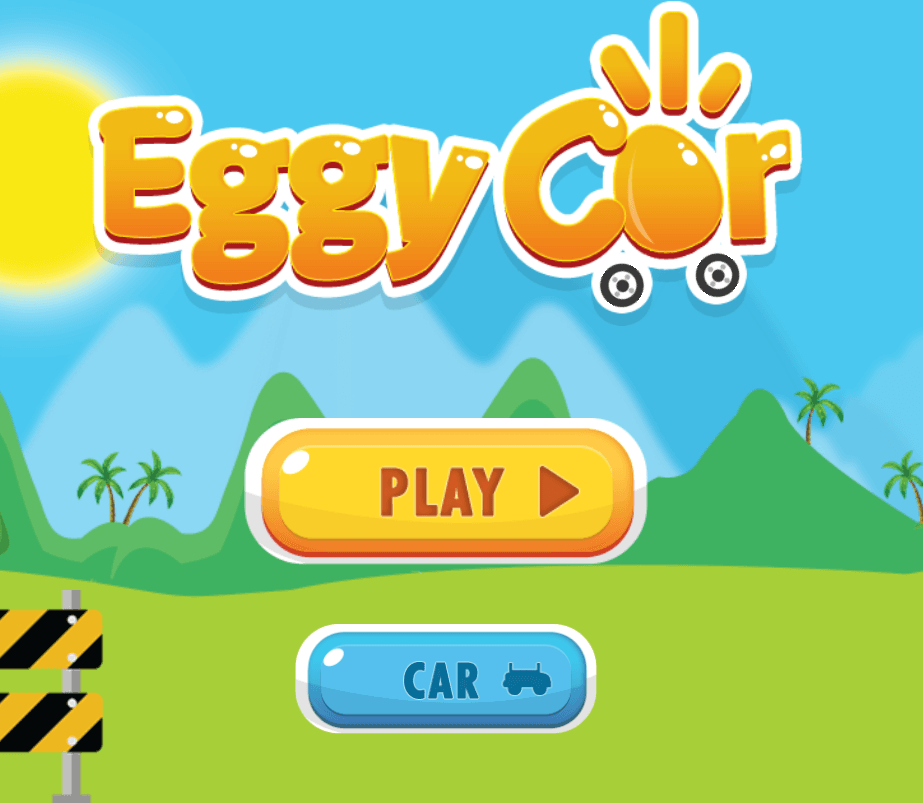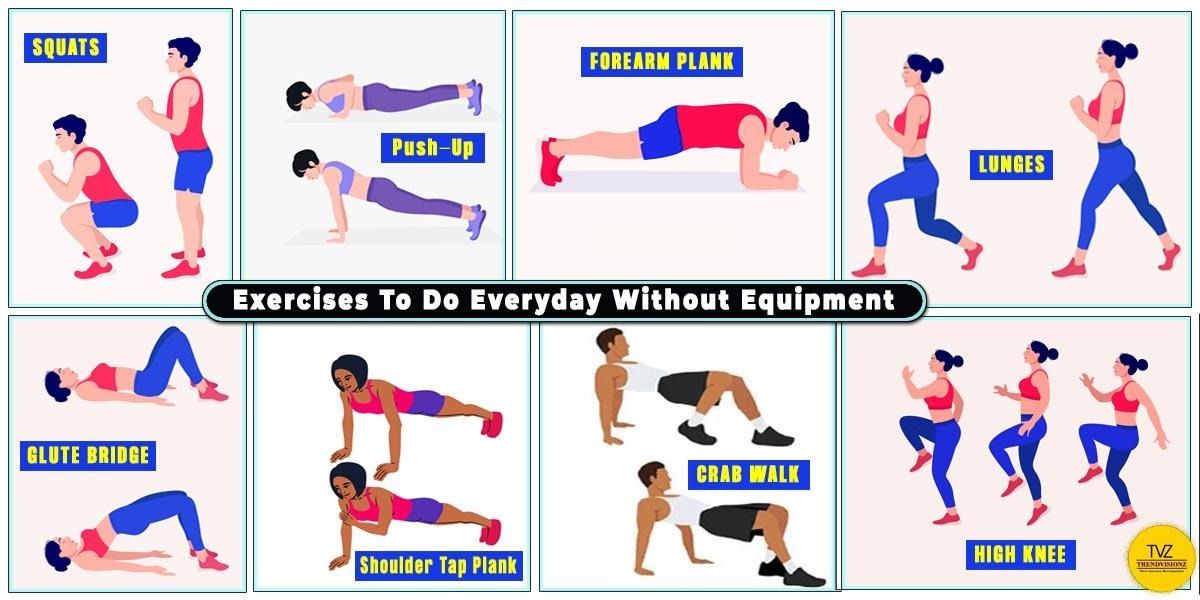

In today’s fast-paced world, finding time for exercise can be challenging. Let’s learn more about this topic below with Eggy Car, as we explore effective home workouts that require no equipment, making fitness accessible to everyone.
Home workouts have become increasingly popular in recent years, especially with the rise of remote work and the desire for convenient fitness solutions. The beauty of these exercises lies in their simplicity and effectiveness, requiring nothing more than your body weight and determination. Whether you’re a fitness enthusiast or a beginner looking to start your wellness journey, these workouts offer a fantastic way to stay in shape without the need for expensive gym memberships or bulky equipment.
Bodyweight exercises form the cornerstone of equipment-free workouts, offering a versatile and effective way to build strength, improve flexibility, and enhance overall fitness. These exercises utilize your own body weight as resistance, making them accessible to people of all fitness levels and perfect for home workouts.
One of the most fundamental bodyweight exercises is the push-up. This classic move targets multiple muscle groups, including the chest, shoulders, triceps, and core. To perform a push-up, start in a plank position with your hands slightly wider than shoulder-width apart. Lower your body until your chest nearly touches the floor, then push back up to the starting position. For beginners, modified push-ups can be done on your knees until you build enough strength to perform full push-ups.
Squats are another essential bodyweight exercise that primarily targets the lower body, including the quadriceps, hamstrings, and glutes. To perform a squat, stand with your feet shoulder-width apart, then lower your body as if you’re sitting back into a chair. Keep your chest up and your weight on your heels as you descend, then push through your heels to return to the starting position. Squats not only build leg strength but also improve core stability and overall balance.
Lunges are excellent for targeting the legs and glutes while also improving balance and coordination. To perform a lunge, take a large step forward with one leg, lowering your body until both knees are bent at 90-degree angles. Push back up to the starting position and repeat with the other leg. Lunges can be done in place or as walking lunges to add variety to your workout.
Planks are a fantastic core exercise that engages multiple muscle groups simultaneously. To perform a plank, start in a push-up position with your forearms on the ground. Keep your body in a straight line from your head to your heels, engaging your core and holding the position for as long as possible. Planks not only strengthen your core but also improve posture and reduce the risk of lower back pain.
Incorporating cardiovascular exercises into your home workout routine is crucial for improving heart health, boosting endurance, and burning calories. These exercises can be easily performed without any equipment, making them perfect for at-home fitness routines.
Jumping jacks are a classic cardio exercise that elevates your heart rate and engages multiple muscle groups. To perform jumping jacks, start with your feet together and arms at your sides. Jump your feet out to the sides while simultaneously raising your arms above your head, then jump back to the starting position. This simple yet effective exercise can be done for extended periods to improve cardiovascular endurance.
High knees are another excellent cardio exercise that can be performed in place. To do high knees, stand with your feet hip-width apart and start jogging in place, lifting your knees as high as possible towards your chest. Swing your arms naturally as you would while running. This exercise not only improves cardiovascular fitness but also strengthens the core and leg muscles.
Burpees are a full-body exercise that combines strength training and cardio for maximum efficiency. To perform a burpee, start in a standing position, then quickly lower your body into a squat position with your hands on the floor. Kick your feet back into a plank position, do a push-up, then quickly bring your feet back to your hands and jump up with your arms raised. Burpees are intense and highly effective for burning calories and improving overall fitness.
Mountain climbers are another great cardio exercise that also engages the core and upper body. Start in a plank position and alternately bring each knee towards your chest in a running motion. This exercise simulates climbing a mountain and can be performed at various speeds to adjust the intensity.
Incorporating flexibility and balance exercises into your home workout routine is essential for maintaining joint health, preventing injuries, and improving overall well-being. These exercises can be easily performed without equipment and are suitable for people of all fitness levels.
Yoga is an excellent practice for improving flexibility, balance, and mental well-being. Many yoga poses can be performed without equipment, making it perfect for home workouts. Sun salutations, for example, are a series of yoga poses that flow together, providing a full-body stretch and gentle cardiovascular workout. Other yoga poses like Downward-Facing Dog, Warrior poses, and Tree pose can help improve flexibility, strength, and balance.
Pilates-inspired exercises are fantastic for developing core strength, improving posture, and enhancing flexibility. These exercises can be easily adapted for home workouts without equipment.
The Pilates Roll-Up is an excellent exercise for strengthening the core and improving flexibility in the spine. To perform a Roll-Up, lie on your back with your arms extended overhead. Slowly roll up, vertebra by vertebra, reaching towards your toes. Then, slowly roll back down to the starting position. This exercise engages the entire core and helps improve spinal mobility.
The Pilates Scissor is another effective exercise for core strength and leg flexibility. Lie on your back with your legs extended towards the ceiling. Lower one leg towards the floor while keeping the other leg straight up. Switch legs in a scissor-like motion, keeping your core engaged throughout the movement. This exercise targets the lower abdominals and improves hip flexibility.
Dynamic stretching involves moving parts of your body and gradually increasing reach, speed of movement, or both. This type of stretching improves flexibility and helps prevent injuries by preparing your muscles for activity.
Arm circles are a simple yet effective dynamic stretch for the shoulders and upper body. Stand with your feet shoulder-width apart and extend your arms out to the sides. Make small circles with your arms, gradually increasing the size of the circles. Reverse the direction after 30 seconds. This exercise helps improve shoulder mobility and prepares the upper body for more intense exercises.
Leg swings are an excellent dynamic stretch for the lower body. Hold onto a wall or chair for balance, and swing one leg forward and back, gradually increasing the height of the swing. After 30 seconds, switch to side-to-side swings, then repeat with the other leg. This exercise helps improve hip mobility and prepares the lower body for activities like running or squatting.
Now that we’ve explored various bodyweight exercises, cardio movements, and flexibility exercises, it’s time to put them together into an effective home workout routine. The key to a successful workout plan is consistency, progression, and variety.
Start by setting realistic goals for your fitness journey. Whether you’re aiming to lose weight, build muscle, or simply improve your overall health, having clear objectives will help you stay motivated and track your progress. Remember, it’s important to consult with a healthcare professional before starting any new exercise regimen, especially if you have any pre-existing health conditions.
When designing your workout routine, aim for a balanced approach that includes strength training, cardiovascular exercise, and flexibility work. A sample weekly routine might look like this:
Monday: Full-body strength training (push-ups, squats, lunges, planks)
Tuesday: Cardio (jumping jacks, high knees, burpees, mountain climbers)
Wednesday: Rest or light yoga
Thursday: Upper body and core strength (push-ups, planks, Pilates exercises)
Friday: Lower body strength and cardio (squats, lunges, burpees)
Saturday: Flexibility and balance (yoga flow, dynamic stretching)
Sunday: Rest
As you progress, gradually increase the intensity and duration of your workouts. This could mean adding more repetitions, performing exercises for longer periods, or incorporating more challenging variations of each exercise.
To keep your workouts interesting and challenging, try circuit training. This involves performing a series of exercises back-to-back with little to no rest in between. For example, you might do 30 seconds each of push-ups, squats, jumping jacks, and planks, then repeat the circuit 3-4 times. This approach not only saves time but also provides an excellent cardiovascular workout while building strength.